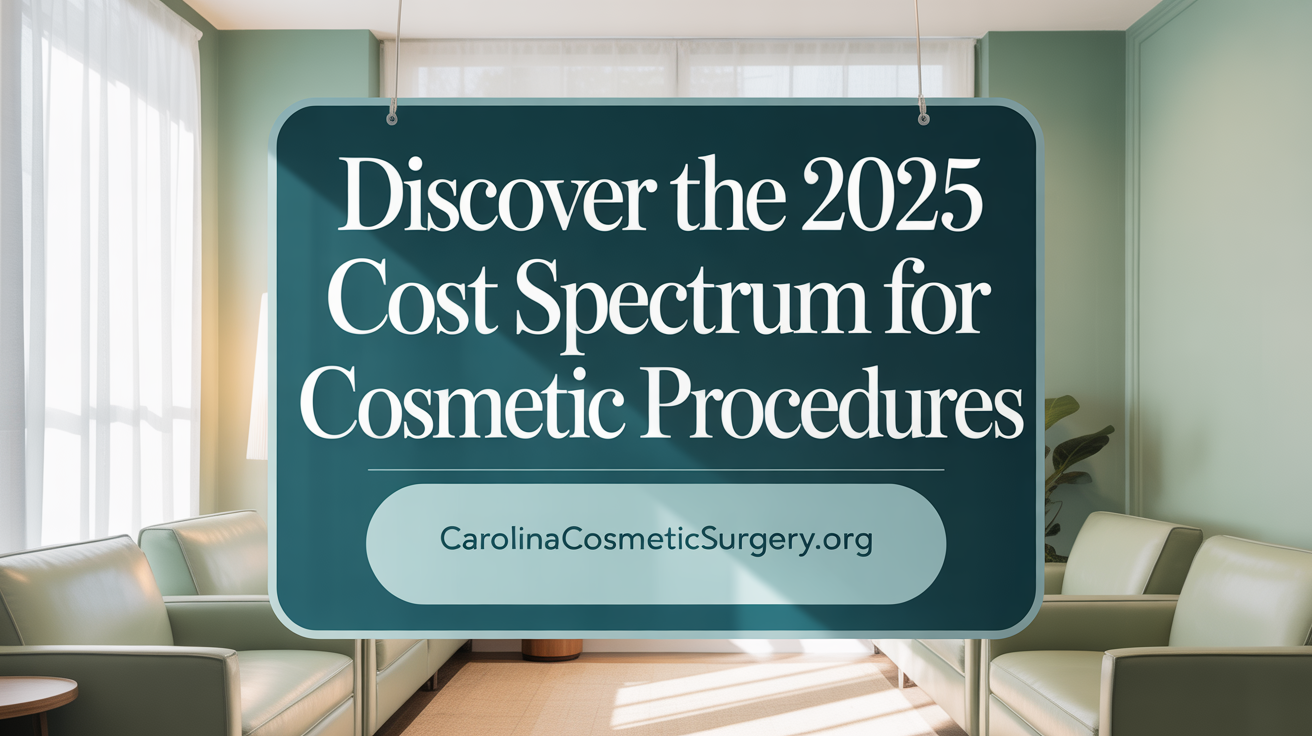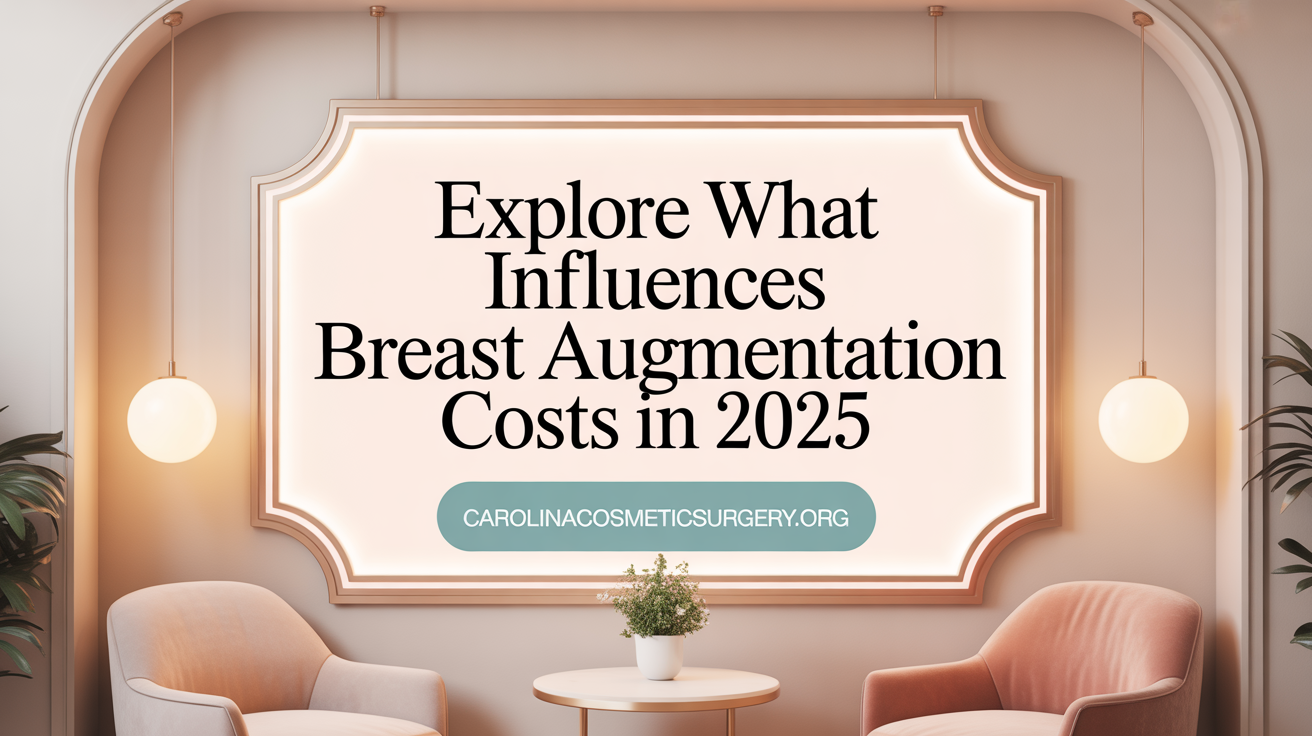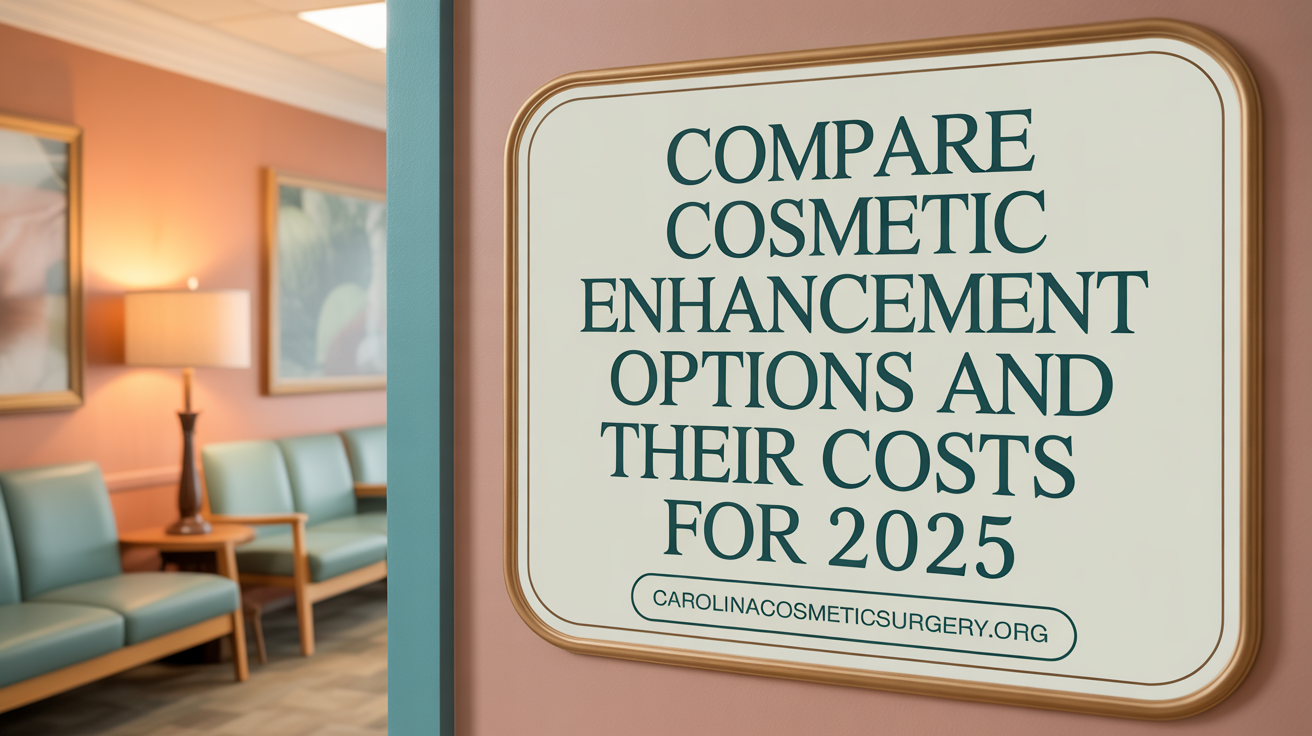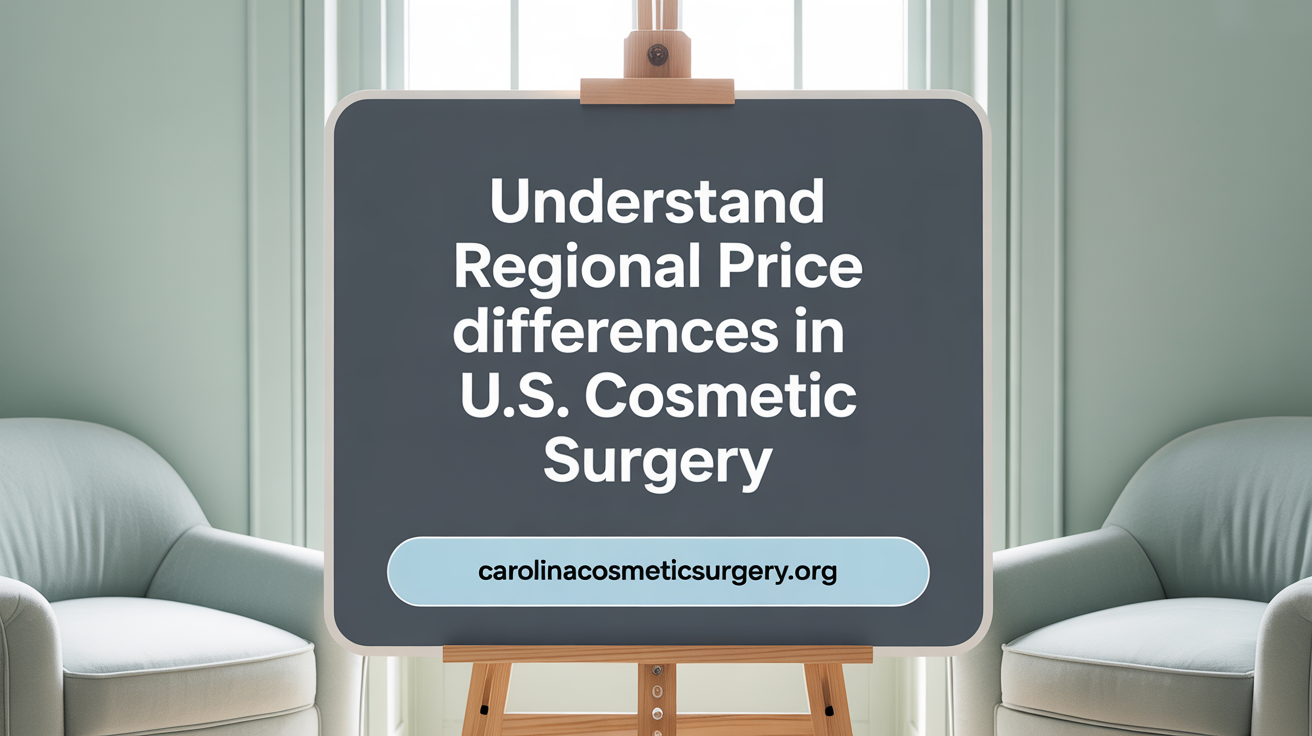Understanding Costs and Trends in Breast Augmentation for 2025
As the popularity of breast augmentation remains strong, many prospective patients seek clear, reliable information about the costs and factors impacting this procedure in 2025. This article provides an in-depth analysis of typical price ranges, implant types, regional variations, and long-term financial considerations. Additionally, it outlines current market trends and data-driven insights, helping readers make confident, informed decisions about their breast augmentation journey.
Typical Cost Range for Breast Augmentation in 2025

What is the typical cost range for breast augmentation in 2025?
The price of breast augmentation in 2025 varies widely, generally falling between $4,000 and $12,000 or even higher depending on several factors. This broad range reflects differences in geographical location, surgeon expertise, facility fees, and the types of implants chosen.
On average, the total expenses encompass more than just the surgeon’s fee. They include anesthesia costs, operating room charges, medical tests, prescriptions, post-surgery garments, and follow-up care. These ancillary costs can add a few thousand dollars to the overall bill.
Different types of implants contribute to the cost disparity. Silicone implants typically cost between $6,000 and $10,000, valued for their natural appearance and feel. Saline implants are usually more affordable, ranging from $5,000 to $8,000. Premium options like 'gummy bear' implants tend to push the total closer to the higher end of the spectrum.
Facilities in major urban centers, especially those with AAAASF accreditation and proximity to high-demand areas, tend to have higher fees. Surgeons with extensive experience or specialized certifications may also charge more.
Additional costs to consider include potential revision surgeries, which are common over a lifetime, and optional procedures such as fat transfer or breast lift that can significantly increase total expenses.
Patients are encouraged to discuss these factors during consultation to receive an accurate estimate tailored to their goals and circumstances. Proper planning ensures they understand the financial commitment involved in achieving their desired aesthetic outcome.
Key Factors Influencing Breast Augmentation Prices in 2025

What factors influence the price of breast augmentation procedures in 2025?
The cost of breast augmentation in 2025 depends on several important factors that can significantly impact the final price.
One of the biggest contributors is the type of implant chosen. Silicone implants generally cost more than saline due to their material and natural feel, with premium options like gummy bear implants being priced higher. The specific surgical technique and the complexity of the case also influence costs, especially if additional procedures like a breast lift or fat transfer are involved.
Another major factor is the experience and reputation of the surgeon. Highly experienced, board-certified plastic surgeons often charge higher fees, which reflect their expertise and commitment to safety.
Geographic location plays a critical role, too. Procedures in big cities and regions with higher living costs tend to be more expensive. For example, costs in New York or California are often higher than in other states.
Facility and anesthesia fees also add up. State-of-the-art surgical centers and highly qualified anesthesiologists demand higher payments, especially when procedures extend over more than a couple of hours.
Post-operative expenses including medications, follow-up appointments, compression garments, and potential revision surgeries further increase the overall cost.
Considering all these factors, the total expense for breast augmentation in 2025 typically ranges from about $5,000 to $15,000. Patients are encouraged to consult with their surgeon to get an accurate estimate tailored to their individual needs.
Types of Breast Implants in 2025 and Their Cost Implications

What types of breast implants are available, and how do they impact the cost of augmentation in 2025?
In 2025, women choosing breast augmentation have several implant options, with silicone and saline implants being the most common. Each type offers different benefits and cost considerations.
Silicone implants are renowned for their natural appearance and feel, making them a popular choice. Due to their advanced technology and preference among consumers, silicone implants typically come with a higher price tag. The cost of silicone implants ranges roughly from $6,000 to $10,000, depending on the brand and shape. They are often priced higher because of their materials and the manufacturing standards involved.
Saline implants are generally less expensive and cost between $5,000 and $8,000. They are filled with sterile saltwater and can be adjusted during surgery to ensure proper size and symmetry. Although saline implants are more affordable, some patients prefer silicone for its more natural sensation.
Premium options like "gummy bear" or cohesive gel implants are also available and usually come at a higher cost, sometimes exceeding $8,000. These implants are designed for longevity, form stability, and reduced rupture rates, which can justify their increased price.
Alternatively, fat transfer augmentation is gaining popularity as a natural alternative. This method involves harvesting fat from other areas of the body and injecting it into the breasts. While cost varies depending on liposuction needs, it typically ranges from $3,000 to $8,000, offering a natural look without traditional implants.
Choosing the right implant type depends on individual goals, anatomical considerations, and budget. It’s important to consult with a qualified surgeon to understand how each option may influence overall costs and results.
| Implant Type | Cost Range | Characteristics | Additional Notes |
|---|---|---|---|
| Saline | $5,000 - $8,000 | Adjustable, less expensive, filled during surgery | Suitable for smaller budgets, less natural feel |
| Silicone | $6,000 - $10,000 | More natural feel and appearance | Popular for those seeking realistic results |
| Gummy bear (cohesive gel) | >$8,000 | Durable, shape-retentive, low rupture rate | Premium option for longevity and safety |
| Fat transfer | $3,000 - $8,000 | Uses own fat, natural appearance | Ideal for minimal augmentation, natural look |
Selecting the ideal implant type entails considering price, desired aesthetic, and long-term durability. Regional costs, surgeon expertise, and additional procedures also influence the final cost.
This variety allows patients to customize their breast augmentation procedure in 2025, balancing cost with outcomes to achieve their ideal results.
Regional and Market Cost Variations Across the U.S. in 2025

How do breast augmentation costs vary across different states and cities?
In the United States, the price for breast augmentation can differ significantly depending on the location. Typically, costs range from as low as $3,300 in some states like South Carolina to as high as $15,000 in premium markets.
For instance, procedures in California and New York tend to be on the higher end, often exceeding $8,000 to $15,000, due to factors like high demand, higher living costs, and specialized facilities. Conversely, regions like Texas and some Midwest states offer more affordable options, with prices around $5,000 to $7,000.
Major urban centers and areas with a concentration of highly experienced surgeons — such as New York City or Los Angeles — usually have higher fees because of increased operating costs and affluent clientele.
How do factors such as cost of living and healthcare demand influence pricing?
Higher living expenses and strong demand for cosmetic procedures push prices upwards in major metropolitan areas. Facilities in these locations often invest more in state-of-the-art technology, safety standards, and skilled surgeons, all of which add to the overall cost.
In contrast, regions with lower living costs and less competition tend to have cut-rate prices. For example, some states with a lower cost of living offer aesthetic procedures at roughly half the cost of those in pricier states.
What is the overall market size and growth forecast for 2025?
Despite regional differences, the breast augmentation market continues to grow nationally. In 2025, the industry is projected to reach a total value of around $1.55 billion, up from approximately $1.40 billion in 2024.
Market growth is driven by advances in implant technology, increasing acceptance, and bigger demand among all age groups. The Compound Annual Growth Rate (CAGR) is estimated at about 10.4%, indicating ongoing expansion.
This growth reflects the diverse options available, technological improvements, and expanding accessibility through financing plans. As the market develops, patients will continue to encounter a broad spectrum of prices linked to their regional location and specific procedural choices.
Long-Term Financial Considerations and Potential Additional Costs
What long-term costs and expenses should be considered with breast augmentation?
When planning for breast augmentation, it’s important to consider the long-term financial commitments involved. Although implants are designed to last between 10 to 20 years, many women eventually need replacements or removals. The typical lifespan of implants, particularly silicone ones, spans about 13 to 15 years, and failure or rupture often prompts a revision or replacement procedure.
Revision surgeries can be costly, ranging from $4,000 to $12,000 depending on the complexity and the type of procedure needed. These are ongoing expenses that should be factored into long-term financial planning.
Besides surgical costs, monitoring for implant health involves regular imaging tests such as MRI scans or ultrasounds, especially for silicone implants. An MRI to check for ruptures can cost approximately $2,000 per session, and the need for such scans might be recommended every few years.
Moreover, some women may experience complications like infections, capsular contracture, or asymmetry, which could require additional treatment or touch-up procedures. There’s also the possibility of needing more extensive procedures, such as a breast lift, if sagging occurs or if there’s a desire to improve breast shape after augmentation.
Ultimately, women should budget for potential future surgeries, ongoing monitoring, and associated health expenses. These long-term costs, often overlooked initially, can significantly increase the overall investment in breast augmentation over a lifetime. Proper financial planning helps ensure women are prepared for these recurring expenses, maintaining satisfaction and safety with their results over time.
Current Trends Shaping Breast Augmentation Procedures in 2025
What are the current trends in breast augmentation for 2025?
In 2025, breast augmentation trends are shifting towards more natural and proportionate results. Patients and surgeons alike favor smaller implants, usually ranging from 250 to 6300cc, to achieve a subtle enhancement that complements individual body shapes.
Many women are opting for fat transfer techniques, which involve moving fat from other parts of the body to the breasts. This method provides a more natural look and feel without the need for synthetic implants, appealing to those seeking a more organic outcome.
Advancements in implant technology also play a significant role. Cohesive silicone gel implants, often called "gummy bear" implants, are popular for their ability to mimic the natural shape and consistency of real breast tissue. These implants are frequently placed underneath the muscle, known as submuscular placement, to enhance contour and minimize rippling.
Personalized surgical planning has become a standard, with the integration of advanced imaging tools. These technologies help visualize potential outcomes, allowing both surgeon and patient to make informed decisions tailored to individual anatomy, skin quality, and personal goals.
Additionally, there is an increasing emphasis on subtlety and authenticity. Many patients prefer procedures that enhance their natural beauty without dramatic changes. As a result, a conservative approach, combining different techniques like fat grafting and natural-looking implants, is gaining popularity.
Overall, the focus in 2025 is on customized, safe, and subtle enhancements, aiming for results that are both aesthetically pleasing and harmonious with each patient's unique features.
National Breast Implant Registry and Its Role in Safety and Market Insights
Overview of the National Breast Implant Registry (NBIR)
The National Breast Implant Registry (NBIR) is a comprehensive database established in the United States to track breast implant procedures and device performance. It serves as a crucial tool for patient safety and ongoing research.
Data Collection on Procedures and Safety
The NBIR collects detailed information about each breast implant surgery, including patient demographics, the type of implant used, surgical techniques, and outcomes. It also records any complications or adverse events, providing invaluable insights into the safety and longevity of various implants.
Collaboration with FDA and Manufacturers
Developed through a partnership between the Food and Drug Administration (FDA), implant manufacturers, and healthcare providers, the registry facilitates transparent sharing of data. Barcode and QR code scanning enable precise tracking of specific implant models and batches, making it easier to identify any safety issues linked to particular devices.
Impact on Postoperative Monitoring and Research
One of the main advantages of the NBIR is enhanced postoperative surveillance. It allows doctors and researchers to monitor long-term outcomes, identify emerging safety concerns early, and develop evidence-based guidelines. This data also supports manufacturers in improving implant designs and helps regulators make informed decisions about device safety.
Why Is This Important?
Having a national database like the NBIR improves overall patient safety by providing real-world data on the performance of breast implants after widespread use. It enables quicker responses to potential problems and contributes to safer surgical practices.
| Aspect | Details | Additional Information |
|---|---|---|
| Purpose | Monitor safety, track procedures, support research | Designed to improve outcome surveillance |
| Data Collected | Patient info, implant details, complications, adverse events | Uses barcode/QR code for precise device tracking |
| Collaborators | FDA, manufacturers, healthcare providers | Voluntary participation for physicians, no cost |
| Benefits | Early detection of safety issues, long-term research support | Enhances surgical safety and informs future implant designs |
| Key Outcomes | Better understanding of implant longevity and safety | Facilitates immediate response to safety concerns in the industry |
Understanding the NBIR’s role helps patients and providers make informed decisions about breast implant procedures and emphasizes the importance of ongoing safety monitoring in this expanding market.
Summary and Financial Considerations for Prospective Patients
Breast augmentation costs in 2025 vary widely depending on implant type, surgeon expertise, geographic location, and associated surgical fees, with prices typically ranging from $4,000 to over $12,000. Beyond the initial procedure, patients should consider long-term costs including implant replacement, revision surgeries, and surveillance imaging. Advancements in implant technology and individualized surgical plans reflect evolving trends emphasizing natural aesthetics. The National Breast Implant Registry plays an important role in tracking safety and outcomes, contributing valuable data for patients and professionals alike. By understanding these financial and market dynamics, individuals can better prepare for their breast augmentation journey, seeking expert consultation and exploring financing options to achieve their desired results with confidence.
References
- The Financial Side of Breast Implants: Pricing and Factors
- How Much Does a Breast Augmentation Cost in 2025? - El Paso ...
- How Much Does Breast Augmentation Cost in Manhattan (NYC)?
- Breast Augmentation Cost by State 2025 - World Population Review
- Boob Job Costs: Breast Augmentation, Lifts and Reductions
- How Much Do Breast Implants Cost in 2025? - Bookimed
- How Much Does Breast Augmentation Cost? - GoodRx
